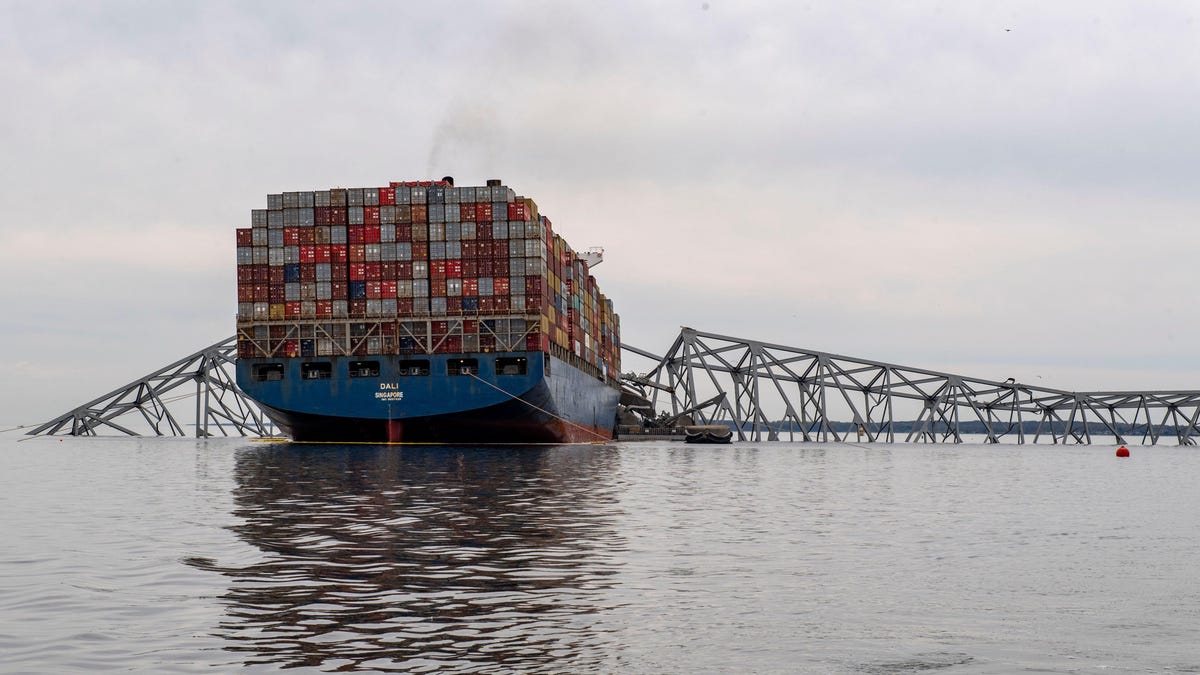When a massive container ship crashed into and collapsed the Francis Scott Key Bridge in Baltimore last week, it left thousands of tons of mangled wreckage right at the mouth of the Port of Baltimore. It trapped ships in the port and blocked other ships from coming in. It also has made salvage efforts that much harder. Now, paths are being cleared in the wreckage to get ships past the disaster area.
To get this done, two auxiliary channels were opened on April 1. One runs along the northeast section of the channel, and one runs along the south end of the channel, according to U.S. Coast Guard Captain David O’Connell, who spoke with CBS News. The north side would accommodate boats that need 10 feet of water or less to operate, while the south side would fit ships that need up to 14 feet. The Coast Guard is working to remove pre-existing debris along the south side of the channel.
One of the channels will be marked with government-lighted aids to navigate and will have a controlling depth of 11 feet, a 264-foot horizontal clearance and a 96-foot vertical clearance.
Right now, the two temporary channels will be used mainly for response vessels, commercially essential vehicles and those working on savage efforts. There are further plans for a third channel to be used by bigger ships, though, according to CBS News:
A deeper third channel is in the works that would require up to 25 feet of depth to operate, but more debris surrounding the striking ship, the Dali, needs to be removed.
“I anticipate smaller draft commercial vessels, maybe some small tugs in the next few days,” O’Connell said. “That’s that 13 to 14 foot draft, but that unfortunately, that’s not a lot of vessels. But it certainly is a start on our way to phase three, which will hopefully get us to 20 to 25 foot draft and that would be a lot more commercial vessels.”
A 200-ton piece of the bridge was removed from the crash site Saturday as crews continued to clear the debris from the bridge, which collapsed when it was struck by a cargo ship last week.
“This will mark an important first step along the road to reopening the port of Baltimore,” O’Connell said. “By opening this alternate route, we will support the flow of marine traffic into Baltimore.”
The action is part of a wider phased approach to opening the main channel, Baltimore Mayor Brandon Scott’s office told CBS News.
Right now, a 2,000-yard safety zone is in effect around what’s left of the Key Bridge. It’s intended to protect personnel, vessels and the marine environment. No vessel or person is allowed to enter without obtaining permission from government officials.

